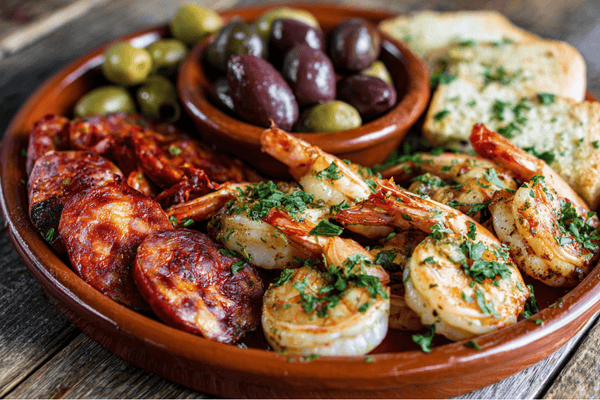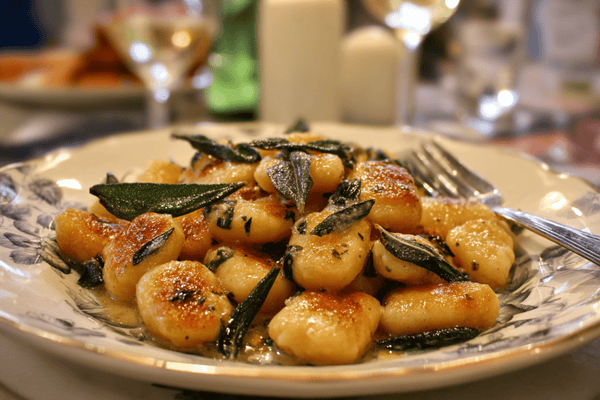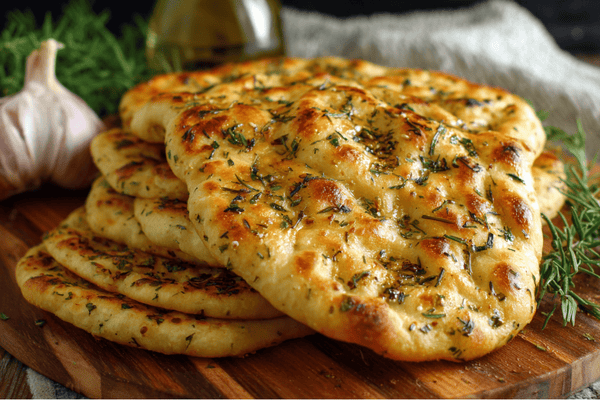 Some meats are notoriously difficult to carve but we all want to make sure our food is presented well which is why learning how to properly carve meat is a must. Moreover, you need to make sure that you only use the best carving knives for meat as these blades are perfectly designed for the job.
Some meats are notoriously difficult to carve but we all want to make sure our food is presented well which is why learning how to properly carve meat is a must. Moreover, you need to make sure that you only use the best carving knives for meat as these blades are perfectly designed for the job.If you’re not sure where to start or you’ve had trouble carving meat in the past then you’re in good hands. I’m here to give you some seriously helpful tips for carving meat as well as introducing you to the right tools for the job.
Table of content
- Choosing the Best Knife for Slicing Meat
- Carving Knife
- Slicing Knife
- So What's the Difference Between a Carving Knife and Slicing Knife?
- Top Tips for Carving Meat
- Choose Your Meat Wisely
- Be Confident
- Don't Carve Fresh Out of the Oven
- Choose the Right Cutting Board
- Going the Right Way
- Preparing the Meat Before Carving
- Dealing With Bones
- When Thin Is Too Thin
- Final Thoughts
Choosing the Best Knife for Slicing Meat
Before you even think about starting to cut your meat, you need to make sure that you have the right tools for the job. While you could, in theory, use a chef’s knife or something similar to a meat cutter knife, using knives that have been specifically designed for this type of work. Generally speaking, there are two different types; carving knives and slicing knives. Let’s run through what each of them is used for and how to tell the difference.
Carving Knife
 A carving knife has a narrow blade with a pointed tip. These blades are markedly thinner than a chef’s knife and are designed to move through the meat with ease, almost gliding as there is far less resistance. The spine of a chef’s knife is usually pretty thick and this, coupled with the design of the blade means that these aren’t the best meat-cutting knives as they tend to drag through the joint which means you don’t get such a thin, even slice.
A carving knife has a narrow blade with a pointed tip. These blades are markedly thinner than a chef’s knife and are designed to move through the meat with ease, almost gliding as there is far less resistance. The spine of a chef’s knife is usually pretty thick and this, coupled with the design of the blade means that these aren’t the best meat-cutting knives as they tend to drag through the joint which means you don’t get such a thin, even slice.One of the main features of a good meat carving knife is a long blade. The blade is like this to reduce the need to saw back and forth through the meat as much. Moreover, many joints such as hams, large pieces of beef and lamb as well as turkeys are so large that you need a bigger blade to get through them. As a result of this, you’ll find that most carving knives come with a blade that measures somewhere between 8 and 14 inches.
When choosing the best carving knives for meat, you should think about the largest items you might cut and buy a knife with a blade that can handle this. This will prevent you from having to saw through the meat which means cleaner slices, less damage and a more juicy piece of meat.
Another feature of a sharp carving knife is its pointed tip. The purpose of this incredibly sharp tip is to allow you to work around bones as well as get right into the joint of meat. However, you shouldn’t replace your boning knife with a carving knife since the former has a much thinner blade that works well for intricate tasks like boning or removing the skin.
You will also notice that a lot of carving knives have dimples along the sides; these are known as grantons and are designed to help reduce resistance, even more, when you are cutting.
The great thing about a carving knife is that it can be used for several different purposes. For example, not only does it work well when slicing slightly thicker slices of meat such as a beef roast, but it’ll also perform well for things like fish. This, along with a carving fork, is a knife that you’d definitely want on the table when serving a Sunday roast!
Slicing Knife
 The other type of knife that you might use when cutting meat is a slicing knife. These are designed to make very thin, even slices and can be used with both raw and cooked portions of meat. They’re also versatile enough to be used with other types of soft foods.
The other type of knife that you might use when cutting meat is a slicing knife. These are designed to make very thin, even slices and can be used with both raw and cooked portions of meat. They’re also versatile enough to be used with other types of soft foods.But how can you identify a slicing knife? Well, these knives have a long narrow blade and, much like the carving knife, will typically have grantons along the edges. This design ensures that you can cut those thin slices without having to move the knife much and so that you don’t need to saw which could tear the meat fibres.
There are many different uses of the slicing knife and it’s essential to familiarise yourself with these when learning how to carve meat. This will allow you to choose the right tool for the job and therefore, get the best results. Here are just some of the things you can expect from your slicing knife:
● Achieving thin slices of ham, pork, poultry, venison, fish and much more
● Preparing vegetables.
● Making salad
● Cutting soft crust bread
● Cutting softer foods such as foie gras and terrine.
While the slicing knife is a versatile piece of equipment, you shouldn’t hope to replace other types of knives with it. It does a great job at some of the things listed above but when it comes to more intricate jobs like peeling and mincing, it might not be as effective. I also wouldn’t recommend doubling it up as a boning knife as it is simply too delicate and may become damaged.
I also wanted to point out that there are generally two types of slicing knives; those with round tips and those with pointy tips. Round-tipped slicing knives have a long blade and rely on this to cut through the meat rather than any sort of point at the end to pierce the meat. They’re ideal for boneless cuts of beef, ham and poultry breasts.
There are some round-tipped slicing knives that have a scalloped edge and this is really the only difference. You’d opt for this type of slicer when cutting cold or moist meats as the scallops will help the meat to fall away from the blade without getting stuck.
You might choose a pointed-tipped slicing knife which is very similar to a Japanese sashimi knife, used by chefs for slicing fish. However, unlike Japanese knives, most western slicing knives are double bevel. This design makes them ideal if you’re looking for something more versatile.
So What's the Difference Between a Carving Knife and Slicing Knife?
Having looked at the different uses for a slicing knife and a carving knife, it can be easy to assume that they’re one of the same things. But this is not the case. There are indeed many similarities including the long blade which is quite narrow. However, the main difference is that a carving knife would always have a pointed tip while a slicing knife wouldn’t. (Apart from the Japanese-style ones I mentioned in the last section.)You will also notice that a carving knife for cutting meat has a much more rigid blade which gives the user greater control. A slicing knife is far more flexible but comes with the advantage of applying less pressure to the meat and creating thinner slices.
Top Tips for Carving Meat
 So, you’ve chosen the right knife for the job and now it’s time to start carving that meat. There are a lot of things to consider when doing this but it shouldn’t be a difficult job. With the right approach and using the correct techniques, you’ll be carving meat like a pro in no time at all.
So, you’ve chosen the right knife for the job and now it’s time to start carving that meat. There are a lot of things to consider when doing this but it shouldn’t be a difficult job. With the right approach and using the correct techniques, you’ll be carving meat like a pro in no time at all.
Choose Your Meat Wisely
 You could have the most high-quality meat cutter knives out there and still struggle if the meat isn’t the best. So, before you even start cooking, you’ll want to choose a quality cut of meat. The best way to find this is to maybe avoid supermarket meat and to buy meat that comes from a reputable farm and get the best cut. You’ll also need to look at how the butcher operates as this will tell you a lot about the quality of the meat.
You could have the most high-quality meat cutter knives out there and still struggle if the meat isn’t the best. So, before you even start cooking, you’ll want to choose a quality cut of meat. The best way to find this is to maybe avoid supermarket meat and to buy meat that comes from a reputable farm and get the best cut. You’ll also need to look at how the butcher operates as this will tell you a lot about the quality of the meat.A good butcher will produce much better quality than anything you would get at a supermarket so it’s often worth making the extra trip. Butchers will ensure that meat is hung before being cut up as this is where the meat magic takes place, and the tenderising happens. As a result of this, the flavour is far superior. Moreover, when hanging, the fibres within the meat will break down which adds to both the tenderness and the flavour.
However, you should also keep in mind that this process shrinks the meat. But that’s not necessarily a bad thing. It’s better to have a high-quality cut of small meat than something large that you buy from a supermarket that hasn’t been hung and is therefore of lower quality. You’d rarely find a supermarket that hangs meat as the shrinkage would affect their profits.
Be Confident
When carving meat, a lot of people feel incredibly nervous. I can understand this as you’re wielding a sharp implement and you have the pressure of creating beautiful, clean, thin and even slices. However, there isn’t too much that can go wrong if you follow the advice in this guide. Moreover, when you’re nervous, you get tense and this can affect how well you control the knife.Just remember that practice makes perfect. The first time you carve meat, it might not end up exactly how you wanted it but you should treat this as a learning curve. Over time, you’ll get better and you’ll soon be carving without having to even think about it.
Don't Carve Fresh Out of the Oven
If you’ve ever watched someone like Jamie Oliver or Nigella Lawson cooking a joint of meat, what’s the one thing they do when they take it out of the oven? After the cooking process, they let the meat rest! It doesn’t matter if it's young meat, or how good the quality or how tender meat is, if you try to carve it as soon as it comes out of the oven, you’re on the road to disaster, even with a really sharp knife.This is because the meat will be too rubbery and when you put the knife in, all of those tasty juices will come pouring right out. So, give the meat around 20 minutes to rest, covered in foil and then tackle carving it.
What’s more, when meat rests, it continues to slowly cook which equalises the internal temperature, distributes the juices around the joint and just makes it so much easier to cut. Why struggle when you don’t need to?
Choose the Right Cutting Board
 It’s really important to think about how you have cooked the meat. If you’ve chosen medium or medium rare then you’ll need to consider what you carve your meat on. When cutting a well-done joint of meat, you can use any secure chopping board. However, medium or medium-rare joints should be cut on a proper carving board that will collect all the juices.
It’s really important to think about how you have cooked the meat. If you’ve chosen medium or medium rare then you’ll need to consider what you carve your meat on. When cutting a well-done joint of meat, you can use any secure chopping board. However, medium or medium-rare joints should be cut on a proper carving board that will collect all the juices.Regardless of the type of chopping board you are using, it needs to be secure. If you’ve got a board that moves around every time you move the knife, this is going to make life a lot more difficult than it needs to be. If you don’t have a very textured surface on which to place the board, laying down a clean tea towel will be enough to hold it in place while you cut, or a damp cloth folded under the cutting surface.
Going the Right Way
When cutting meat, it is really important to make sure that you carve across the grain as opposed to with it. This will ensure that as much moisture is retained as possible and that the meat stays really tender.That said, there are some meats that are naturally very tender that can be carved with the grain. This includes things like loin or fillet. However, if you’re in any doubt just go against the grain and you should have no problems.
Preparing the Meat Before Carving
Nobody wants a mouthful of string but a lot of joints come wrapped in this. Others may have things like nets, elastic bands or skewers that hold everything together. You should remove these before you start cutting. Yes, the joint might roll apart but that’s preferable to having to sift your way through your meal looking for bits of debris.
Dealing With Bones
 It is helpful to remove bones from the meat before cooking with a good bone-cutting knife or boning knife. However, this isn’t always possible such as with a bone in leg joint for example, and you may find that you have to carve the cooked meat with bones in it. But don’t panic, this isn’t as complicated as you might have thought.
It is helpful to remove bones from the meat before cooking with a good bone-cutting knife or boning knife. However, this isn’t always possible such as with a bone in leg joint for example, and you may find that you have to carve the cooked meat with bones in it. But don’t panic, this isn’t as complicated as you might have thought.If you are cutting a leg with a bone in then it’s best to carve a thin wedge from the middle of the leg and then follow the angle of this wedge, carving down towards the bone. You will then simply be able to lift out your slices of meat.
It can also help to use a clean towel when cutting a joint with a bone as this will allow you to turn the bone and make horizontal cuts away from you.
When This Is Too Thin
One of the main things we all try to achieve when carving meat is getting thin slices. But there can be too much of a good thing and if you cut the meat too thinly then this will reduce the flavour. The ideal thickness for a slice of meat is around ¼ of an inch or 5mm. Aim for this and remain consistent throughout the joint for better flavour and a more aesthetically pleasing presentation. An electric carving knife however or a dull knife would not result in a clean cut.
Final Thoughts
If you’re faced with a large joint of meat, it can feel like you’re about to tackle Everest. But what do people aim to do when they tackle Everest? They aim to conquer it and that’s exactly what you’re going to do with that joint of meat.Carving meat doesn’t have to be a daunting task. If you’ve got the right tools for the job, ideally a carving knife, and are willing to practice the tips I have shared in this guide then you’re well on your way to becoming the meat carving expert within your family.


